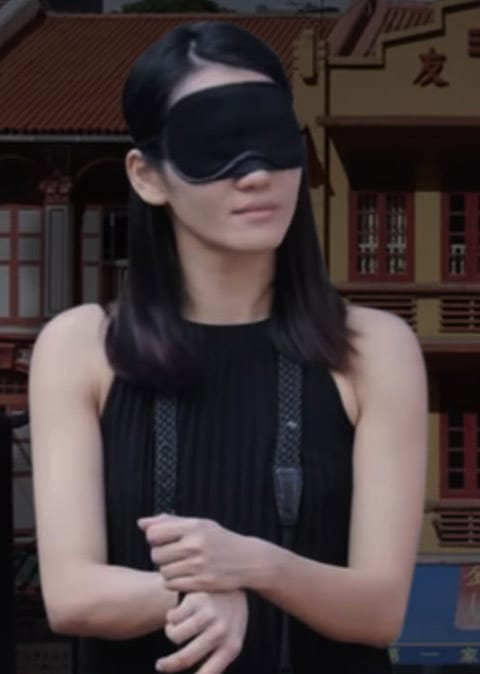Have you ever thought of how the food you eat arrives on your plate? Ever wished to grow your own food or live more sustainably?
Cuifen Pui definitely has.
With a genuine love for the environment and people, Cuifen co-founded Foodscape Collective in 2015.
After working as an environmental scientist with a not-for-profit for over 15 years, Cuifen embarked on a journey to live sustainably—starting with food—in 2009.
I started to learn that — being a sustainable person who really cares about Earth, people and yourself — caring for the forest (which was what I focused on) is not enough.
As she uncovered ways to live more sustainably, Cuifen started bringing people together, and unintentionally became one of the pioneering Community Builders in the Foodscape Collective ecosystem.
Foodscape Collective started out as a fun initiative among like-minded friends. Today, it is transforming into an ecosystem of people, groups, and businesses striving for a fair, inclusive, and regenerative food system.
The group runs community-based initiatives around food sustainability. These include applied research on regenerating soil; guiding would-be compost makers to kick-start communal food scrap composting in their neighbourhoods; and transforming under-utilised spaces into biodiverse edible gardens cared for by the local community.
Foodscape Collective’s work has sparked interest for customised programs from agencies, schools, and other organisations. In response, Cuifen registered Food Citizen as a business in the Collective’s ecosystem, inviting people in the Collective’s network to create programs and workshops.
Let’s find out more about her experiences as one of the community builders of Foodscape Collective.
Mapping Out Singapore’s Food-Growing Spaces
Before the Collective took shape, Cuifen and co-founder Huiying created a Google Form to crowd-source information from food growers in Singapore. In just four days, they received around 200 responses to questions on where people grow food, how, and why. Cuifen was intrigued by people’s responses, especially by their reasons for growing food.
Based on the data, they created a map that shows where food was grown all across Singapore.
“The map was very well received. For the first time, you could actually see where people are and read about what they grow, where, and why. Before this, we only had a sense that there was this growing movement,” says Cuifen.
One of the first things they did afterward was to organise a talk about the map. To their surprise, 60 people signed up.
“I was surprised to see that the Ministry of National Development actually chose to highlight our event on their Facebook page. In the post, they said that if people had their Sunday afternoon free, they could go and listen to us,” she says.
In the years that followed, Cuifen developed more digital maps of Singapore, mapping out information on Singapore’s food system—farms, gardens, supermarkets, coffee shops, and more. In the process, she realised that digital maps made using existing data did not provide insight into what’s actually happening on the ground.
On the other hand, Cuifen connected with people working on different aspects of the food system. She unearthed the stories of those working in farms, gardens, food businesses, food charities, food rescue, community kitchens, and lower-income communities. She spent hours nurturing the community network, connecting with people one-to-one, and publishing updates on the Collective’s Facebook page.
The Collective’s community has since grown. It’s also thriving online, with more than 4,000 followers on Facebook. The Collective has more than 50 contributors helping out in different initiatives.
A Culture That Encourages Sharing and Contribution
To Cuifen, shared values within the ecosystem are crucial. The Collective believes in cultivating a culture where everyone’s views are equally respected.
“Previously, people [often] looked to the core active contributors for leadership. We made it clear that everyone is a contributor. They can choose to step in and start contributing in different ways,” she says.
This culture of contribution is exemplified in the way they helped transform under-utilised park space into a biodiverse edible garden, with the support of the National Parks Board (NParks) and the local community.
The NParks South West Parks division was impressed by how Tang Hung Bun, a natural farmer, cultivated green spaces in schools and business compounds. They invited Tang to do the same in public parks, and Tang asked Foodscape Collective to join him.
With NParks’ agreement, space was set aside in Jurong Central Park for Tang and the Collective to pilot ideas that the Collective and NParks want to see in Singapore.
This initiative focuses on nurturing a supportive collective leadership and learning culture. For instance, Tang guides NParks and Collective members in natural farming principles, meeting weekly to learn, garden, and enjoy time together. Local residents join the group organically when they express interest in the group’s practices and contribute to the activities.
Having a Good Mix of Organic Flow and Structure Within the Ecosystem
Cuifen is an intuitive leader and finds joy when there is purpose and meaning in the moment. She would rather be spending time chatting with people at community kitchens and gardens. These days, she draws clear boundaries on her role as a community builder.
“In the initiatives I co-led, things tended to have an organic flow. If people tried to look for structure, they found that they had to step in and create it. While the organic flow helped us grow a sense of culture, it became easy to get lost on what the intention of the initiative was. For this reason, I am starting to harness some of my new skills to craft structured projects that allow for organic flow at the local community level,” she explains.
As a community builder, she enjoys the one-on-one approach with community members to understand how to support them better.
Staying in the collective involves both challenges and successes
Like every other organisation, growing and maintaining a collective isn’t easy.
There were moments when Cuifen experienced communication breakdowns within the ecosystem. As very few people were leading multiple initiatives at the same time, a number of them experienced burnout.
The experience of burnout taught Cuifen that before one can make an impact on others, she needs to learn to take care of herself. In the last two year, she has stepped away from the Collective’s core leadership to focus on self-care, while co-leading selected initiatives whenever she has the capacity to do so. She is thankful that the ecosystem has continued to grow and evolve.
To Cuifen, this is a sign of success—when the persons initiating the culture and programs are able to step away and trust that the ecosystem will continue to evolve with the care of contributors.
Reflection Questions
- What are some of the challenges you face as a community builder? What motivates you to keep building your community?
- What are some shared values that you and your community cultivate?
- How do you handle burnout as a community developer? What advice would you give to other community leaders when they’re experiencing burnout?
- How do you continue to strengthen bonds within you and your community during the Covid-19 pandemic? How has that affected your role as a community leader?





















